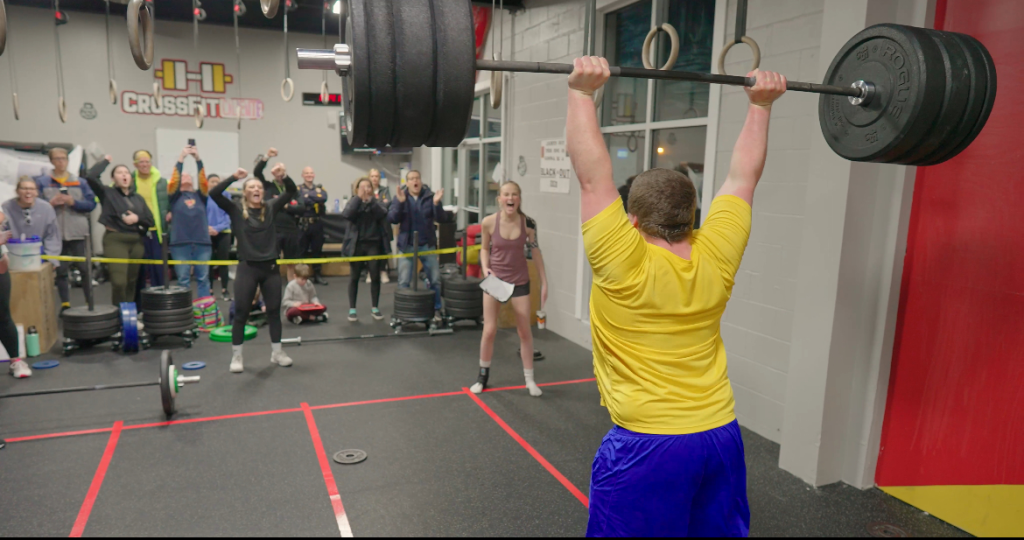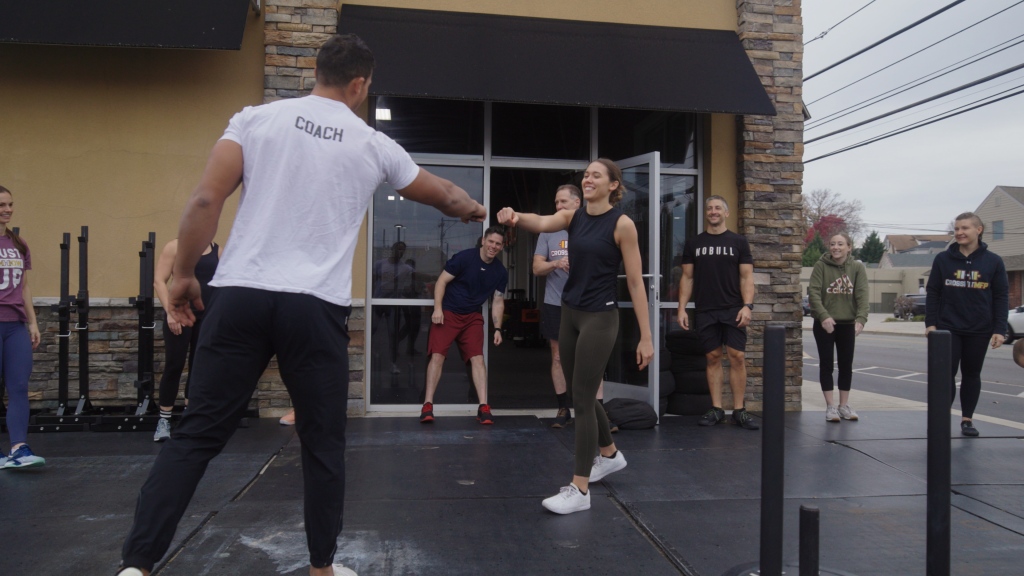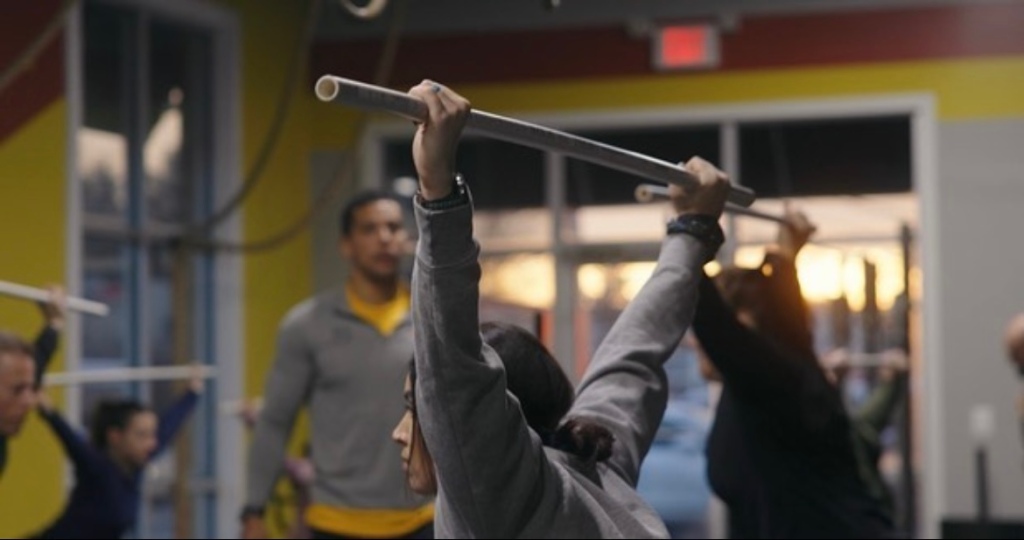What Does it Mean to be Powerful?
Everyone wants to be powerful, but does everyone know what it truly means? Take a step back to consider “power” as a concept. When we think about the word “power” we think of it regarding influence, respect, and authority. Fundamentally, we see “power” as having the ability to access the highest possible amount of energy and capability within your craft. We correlate power with someone’s status, accomplishments, and recognition. We see a powerful person as one who can create change – and one with great responsibilities.

My emphasis on power has nothing to do with social influence or status. I’m here to remind you that we all possess power within our cellular infrastructure that allows us to achieve magnificent physical feats. Every person can express high levels of physical power. Our power comes from us applying a high amount of force over distance or through resistance, all within a short period of time. This is how power is defined within the world of Human Performance and Science:
- Standard Physics: Power = Work (force x distance)/Time
- Definition (within CrossFit’s 10 components of fitness): The ability of a muscular unit(s) to apply maximal force in minimum time. In the CrossFit methodology, power is a tool to measure work capacity.
On the surface, these formulas may seem like unimportant scientific jargon. So, let’s think about this on a more human level. Take a step back and allow yourself some time for introspection. What would you consider to be powerful? As a hint… think about any movements that have a rapid and explosive release of energy.
It’s natural for your mind to correlate power with sports performance. Coming from an athletic background, this is also where the foundation of my knowledge originates. However, the need to be powerful is far more important than sport. When we are powerful, we are best positioned to optimize our health and achieve longevity. It’s not a bold assertion to say that we should all strive to be powerful people. However, many people lose sight of how important power can be. Furthermore, they lose sight of the wonderful reality that no matter who you are, power is expressible and attainable. You are powerful.
Power 101: What Types of Movement Require Power?
Now that we have discussed the basics of power and why expressing it is crucial for wholistic health, let’s talk about the movements that require it. Take a moment to reflect on which movements and activities require quick bursts of energy. What specific activities or sports require you to produce rapid force into external forces like the ground, objects, or gravity?
Plyometrics: The term “plyometric” specifically refers to a muscle rapidly lengthening (eccentric phase) followed by an explosive contraction (concentric phase). For example, any variation of jumping (in space, to an object, etc.) is a classic example of an expression of power. When you perform a basic exercise such as a vertical jump, you quickly lengthen (through what is called a snap down), then generate force through your legs and propel yourself off the ground. More importantly, plyometrics are most effective when we focus on LANDING from variations of jumps. More Eccentric Force absorbed=More ability to produce force.

In sports and daily life, sprinting and throwing are two distinct ways that we produce multiplanar, total-body muscular recruitment that potentially transfers to our functional, human lives. Examples such as jumping and sprinting are predominantly lower-body expressions of power (note: there are expressions of rapid force within the midline and upper body, as well).
Resisted-Based Power (Various Forms of Weightlifting): Resisted-based exercises require our body to produce high amounts of force from our “core to extremity” to an external load (weighted object).
This means our hips/spine/shoulder girdle work collectively to produce force. One example would be a movement like hinging quickly to open and close the hips using the posterior chain (glutes, hamstrings, lower back). A notorious variation of resistance-based power is Olympic Weightlifting. This includes movements such as the snatch and clean and jerk, in which athletes lift (elevate) the weights through powerful ankle, leg, and hip extension/drive.
Other common examples of exercises with resistance include:
- Any traditional powerlifting exercise (squat, deadlift, bench) that is specifically applied to be performed for speed > heavy loading.
- Throwing Medicine Balls in a variety of ways.
- Jumping with resistance (weights/bands).
Sport-specific Movement and Power
It’s relatively clear to see how power manifests in sports. Most sports demand some unique, powerful movement patterns. Some examples include:
- Basketball: Jump shots, dunking, sprinting, lateral movement guarding.
- Baseball/Softball: Pitching, batting, sprinting
- Tennis: Serving, lateral movement, swings
- All Field Sports: Soccer, Football, Field Hockey, and Lacrosse require short bursts of energy and explosive movements of power.
A Lesson on Physical Power: Science and Significance
Let’s begin by examining two systems – musculoskeletal and neurological – and consider how they distinctly interact for our body to create a powerful movement. Before we go too far into the details, let’s start with the basics.
A movement that is considered “powerful” involves your brain telling the muscles to move faster and with more force. It’s that simple, really! Now, let’s examine how these components are interconnected in the science of developing athletic power:
- Brain Power: When you try to move with some juice, the nervous system needs to rapidly contract. This improves coordination, reaction times, and the brain’s ability to rapidly communicate with muscles, leading to better awareness of an individual’s movement.
- More Motor Units: The basic functional unit of muscular control is the motor unit, consisting of a motor neuron and the muscle fibers it innervates. Training for power involves recruiting a greater number of motor units simultaneously. In other words, Brainpower = more units = more opportunity to control your physical body.
- Longevity Mindset: More motor control and improvement of brain activity have the potential to assist with the prevention of neurological-based illnesses, which is one of the “Four Horsemen” causes of death within our society.
- Get Twitchy: Our motor units hold numerous muscle fibers that are responsible for rapid and forceful contractions, called Type II (fast twitch) fibers. Although we have different types of Type II fibers, all we really need to know is that power-based movements stimulate these fibers that create the highest potential for growth and performance.
- What is Hypertrophy: Training for power can lead to hypertrophy of Type II muscle fibers, meaning the fibers grow larger and more capable of generating force. Note: This does not mean that the muscle aesthetically grows larger, this specifically refers to the force-generating capacity of the muscle.
- Longevity-Based Mindset: Improve physical quality of life by maintaining fast twitch muscle fibers. Specifically, as you age, the very first component of fitness that deteriorates is your power output. Physiologically, your fast twitch fibers begin to lose full capacity. This makes It ESSENTIAL to incorporate power-based movement because we MAINTAIN fast twitch fiber function through power development. Another fun fact is that activities like jumping and plyometrics, place positive stress on bones, contributing to increased bone density, which is a physiological component of health standards. This can be particularly important for preventing osteoporosis and maintaining bone health as you age. In other words, if you want to enjoy a higher quality of life and maintain independence as you age, I recommend you prioritize your power.

3. Combining Brain and Muscle: Power-based movements require practice and refinement. The central nervous system (CNS) is responsible for timing and synchronizing the brain’s ability to communicate with the muscles.
- Neuromuscular Coordination: Power movements often require specific motor skills due to the constant transactions between the brain and muscles. This process called “Motor Learning” comes when the nervous system refines these skills to optimize power production.
- Longevity-Based Mindset: Motor skills can transfer well to functional strength. Although you may not need to jump, lift weights explosively, or sprint, more brain and muscle connections can OPTIMIZE everyday movements and activities. When I am 80 years old, I want to be able to get up off the ground with some jazz or jump over a puddle. Maybe I’ll pick up a new hobby, like golf! Regarding injury prevention and rehabilitation, developing power is essential for joint and tendon health. Proper power protocols restore strength, coordination, and function after injuries. This is truly essential in the longevity of sport or physical expression.
4. Beyond Science, The Somatic Expression of Trauma: Recently I’ve become deeply interested in healing trauma via somatic (physical) expression. We all have some variation of trauma – whether it be physical, mental, emotional, or spiritual. It’s a complex, rather profound notion that demands another article. To keep it simple, it comes down to having the ability to physically express yourself via movement that produces fast and rapid force that can significantly affect how we release our forms of trauma. Some examples include:
- Forcefully and rapidly moving areas of past physical trauma (i.e.: abuse/injury) can release the negatively stored energy. Examples include: shaking your arms, legs, hips, and torso. This can be incredibly rewarding to release these negative vibrations. Yes, you will look silly, but it works! If you are worried about looking weird, then join a dance class!
- Releasing stored emotional trauma (i.e.: Anger/Guilt/Unhappiness/Fear) into an external object, such as throwing. My favorite line to tell my clients is “Any life problems that you have, you can take it out on this object.” With that intent, they not only improve their power but improve their well-being.
- As the brain’s capabilities are enhanced, mental trauma caused by neurological imbalances can be prevented from power-based movement (neurodegenerative disease). From a self-worth perspective, your body’s capability to physically express rapid force could create feelings of empowerment. This of course is my own relative perspective and opinion; however, it has been confirmed by many of my clients.
- Your ability to manifest and connect to your higher self can be significantly enhanced by developing the body’s ability to create a higher vibration. Physically, muscular contraction and electrical activity within our 7 main energy portals, also known as Chakras, can be transmuted into spiritual energy, but only if you are mindful and open to that idea. These sources of energy unfortunately can absorb negative vibrations (trauma) just as much as they put out. A specific area where our body stores trauma (for a variety of reasons), is within our pelvis.
- Your Root and Sacral chakra (pelvis, naval area), aka energy systems, are responsible for keeping us grounded and opening a portal for us to manifest, create, desire, and achieve. To apply this, think about movements such as kettlebell swings and broad jumps that require physical expressions of the pelvic/sacral region. You not only activate the energy stored within that area, but you also create a heightened connection to those energies. With the right guidance, you can learn to positively transmute trauma, and tap into releasing energy from a spiritual perspective.
Get Mad Fit Tips: Incorporating Power into Your Routine
Hopefully, by now, you understand that developing power is beneficial for all people, but this can be a complicated practice. More complexity to neurologically transfer brain power creates a HIGH DEMAND FOR SKILL AND ACQUISITION. It’s essential to have guidance, structure, and progression so you can integrate power into your routine.
Start with reflection: How do you think power can benefit you? Get curious about why increasing your body’s capability to produce force, more quickly, could be valuable for your lifespan, and health span.
Here are simple steps to start…
Master Your Body: Plyometrics are essential when beginning a power development journey. Let’s start with simple exercises that are categorized within the light power/speed continuum. No equipment and minimal space are needed.
- Jumping Jacks
- Skipping
- Vertical Jumps
- Depth Drops
- Broad Jumps
- Bounds
- Hopping
POGOS for POWER: The pogo jump is a great way to specifically target the feet, Achilles tendon (ankle), and lower extremities. I would highly recommend practicing these WITHOUT SHOES – Embrace being BAREFOOT.
How to Incorporate Resistance: Once you begin to add external forces, such as weights, it is essential to prioritize movement mechanics and consistency. Resistance is highly beneficial for power expression, however with any program, having the correct structure and progression is key.
- The Olympic Lifts: By far the most efficient and effective way to produce rapid force to resistance. This is via the Clean, Jerk, and Snatch exercises. I will not go into depth about technique, as I recommend you find a reliable coach who can appropriately teach and progress these movements.
- Tips: Start with Kettlebells and Dumbbells. Learn fast hip extension with Swings, then progress to Cleans, Jerks, and Snatches. DBs and KBs also can be done unilaterally (one side at a time).
The Power of Potentiation, Combining Resistance and Bodyweight: Many resistance-based exercises could be used to “potentiate” bodyweight power-based movements. In simplest terms, resistance-based exercises make the brain and muscles more “activated” to make the body move faster when performed without external weight. Concepts and methods such as “contrast-based training” use potentiation as a strategy to enhance strength, power, and stamina.
- Potentiation Example: Deadlift a relatively heavy weight for 3 reps. Slowly lower the weight for 3 seconds, pause on the floor, then push with the legs and open the hips fast. Then, immediately perform a vertical jump or a broad jump.
Go “Balls to the Wall”: Throwing medicine balls, usually to a resilient wall, is a highly effective way to embrace the full benefits of power. With that said, I would assume most individuals incorporating med ball throwing are not receiving the full benefits due to misuse.
- Coach’s Cue: “IF YOU THROW SLOW, YOU WILL BECOME SLOWER”
- Meaning, you have to give FULL EFFORT to actually benefit. If you are just going through the motions, you are wasting your time.

“Coiling 101”: Developed by David Weck (WeckMethod), coiling is a way to incorporate the benefits of rotational power. Basic coiling integration through isometrics (holds) is a great start. Then, you can begin to apply the “uncoiling” of the torso and hips within exercises using landmines (Landmine University).
Power Pyramid #1, Sprinting: Run and move your body as fast as you possibly can. This is the easiest and most effective way to develop FULL BODY power. Sprint down your street for about 50-100 meters. Complete for 4-6 rounds with at least 2:00 rest in between. Your neighbors will love it and you will develop all the power you need. The con of sprinting is that technique and mechanics are essential to maximize progress.
- Coach’s Note: If you have running limitations, this can be applied to any ergonomic machine (Rower, Bike). Move as fast as possible for 15-30 seconds, then rest.
- Enhanced Athletic Performance: In athletics, fast-twitch ability can MAKE OR BREAK a high-level athlete. Keep it simple and start with sprinting!
Power and Potential – Powerful People are Happy People
Whether you are training to play with your grandkids or training for Division I athletics, you need power. Power allows us to feel physically capable. It boosts confidence and self-esteem. I encourage you to open your mind to discover power’s infinite benefits, but remember, recovery is important when you are integrating power into your routine. Don’t overdo it with this new foundation of awesome movement. If you have days in which you incorporate high power output, allow your body to recover and adjust to the volume. Overuse and poor recovery could negatively impact your performance.
Remember that powerful people are happy people. Use this article as an opportunity for introspection. Think about the ways in which you use power to thrive. And finally, challenge yourself to seek growth and become more powerful. Embrace the journey, understand your own power – and enjoy its role in wholistic health.






Leave a comment